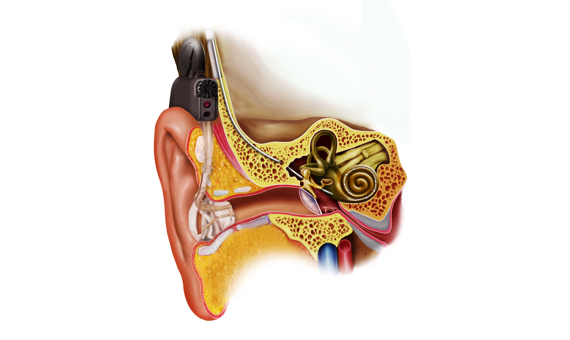The idea of a bionic man has become a bit closer after a breakthrough in the field last October. A man is now able to move an implanted arm naturally and can once again perform his daily tasks (including returning to his job as a truck driver) ten years after suffering the amputation of his limb.
This achievement, the result of a research project between two Swedish universities, required the convergence of two disciplines that have been progressing rapidly in recent years. On the one hand, the development of mechatronics has enabled the implantation of increasingly sophisticated prostheses. While at the same time neuroscientists have managed to reproduce the process that goes from thinking about moving an arm all the way until it moves to sending sends its sensations back to the brain.
Without any sort of remote control, the Swedish trucker named Magnus can catch things and feel them, and he has been living quite normally with this for 18 months. This means that history has been made in bionics, whose principal successes we review here:

Prosthetics and Amputations (sixteenth century) the “prehistory” of bionics dates back to ancient Egypt, where 3,000 years ago the first known prosthesis was used: a wooden toe that was fit to the foot with a piece of leather. Time passed until mechanical limbs began being used that recovered the function of the lost limbs. It was in the sixteenth century when the French barber-surgeon Ambroise Paré invented a prosthetic hand with a mechanism for moving the fingers.
Paré was working in the battlefield and also laid the foundation for surgical amputations, the first essential step in later making implants. Since then, the technology of artificial limbs has been closely linked to battle, with major progress occurring after each of the major wars. Thus, World War II prompted the development of modern prostheses, made of new materials such as plastics and titanium.

Cochlear Implant (1976) was one of the great achievements of bionics, for the first time it allowed a person, to regain a sense that had been lost: hearing. Beyond a mere hearing aid, which amplifies sound, cochlear implants allow those patients with profound deafness due to damage to the cochlea (located in the inner ear), but whose auditory nerve works perfectly, to actually feel the sound.
This technique requires a surgical operation, performed for the first time in a hospital in Paris in September 1976. In addition to attaching an external microphone that collects and processes sounds, a device that transmits electrical signals to the nerve, through some electrodes, must be implanted within the skull.

Artificial Heart (1982) another major objective of bionics is to replace the human heart with an artificial device. The basic mechanics of the heart is a pump system, but the subtleties of our most important muscle mean that imitating it in a permanent way remains an ongoing challenge.
Artificial hearts are used primarily to keep alive patients while waiting for a transplant. However, in December 1982, a team of researchers from the University of Utah (USA) dared to implant a device to permanently replace the heart. The recipient, Barney Bailey Clark, survived for 112 days with an artificial heart. Since then, improvements in the mechanism, in the control over organ rejection (as with transplantations), and in the batteries have all worked together to lengthen the survival time to over 7 consecutive years with a single artificial heart.

Robotic Hand (1961) The 1960s saw the launch of modern robotics, thanks to the work of institutions like MIT and its Artificial Intelligence Laboratory. There, in 1961, Heinrich Ernst developed the first computer-operated mechanical hand. In its wake, in 1963, researchers at a hospital in Downey (California) created the first robotic arm designed to assist patients with disabilities.
In the following years, robotic arms were to be used in industrial applications. Robotic prostheses were especially perfected in science fiction, such as the implanted bionic hand given to Luke Skywalker in the film “The Empire Strikes Back” (1980). And now, in the twenty-first century, the idea has already begun to take shape, with the commercialization of increasingly sophisticated and intelligent robotic hands, which detect pressure and know when to stop squeezing an object before damaging it.

Mental Control (2007) the wars in Iraq and Afghanistan had the secondary effect of encouraging the development of true bionic limbs. The US military research agency (DARPA) has invested nearly $50 million in various prototypes, implanting them in war veterans who have suffered amputations.
In 2007, Claudia Mitchell, a former US Marine, was the first woman implanted with a bionic arm. She could open and close her hand by thinking about it, although this mental control was indirect. Surgeons redirected the nerves from her amputated arm toward her chest muscles, which when contracted transmit signals to the robotic limb. In recent years, there have been many small advances that allow for more direct communication with the brain and even bidirectional: patients such as the Swedish trucker Magnus can already receive sensations through their bionic limbs.
Comments on this publication